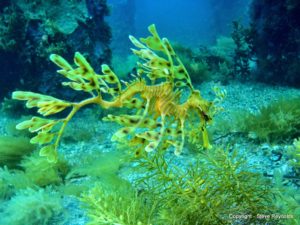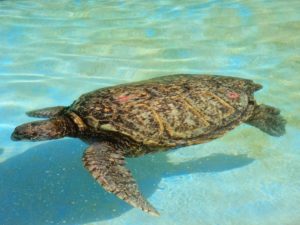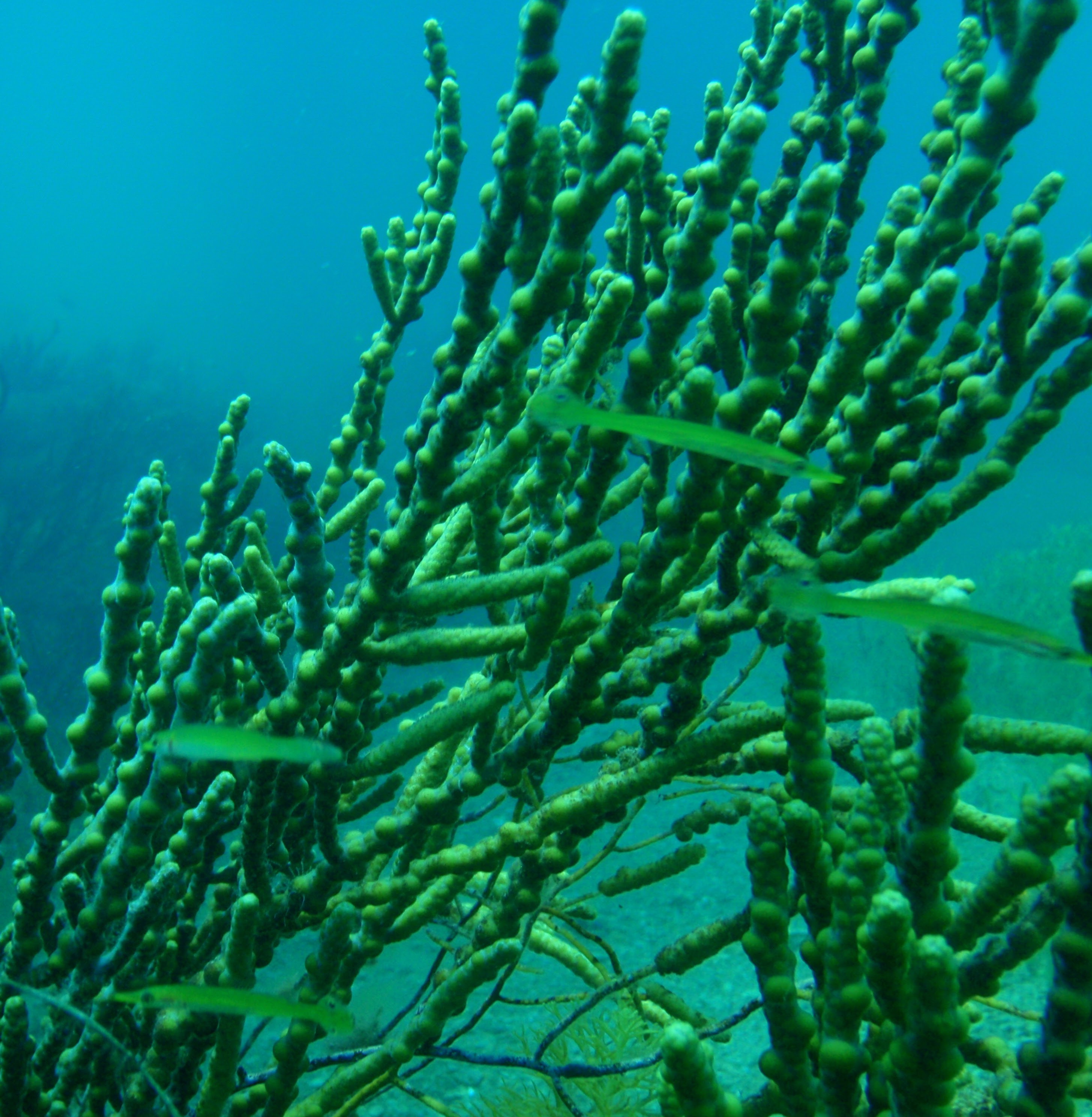More on Mimicry, Mutualism and Symbiosis
by Steve Reynolds
I keep returning back to my roots. As reported in The Colour of Fish in 2017, my first ever attempt at writing about marine life started in 1979 after I had read an article titled “Colour it Blue” by respected fishing writer Dick Lewers in the September 1971 issue of “Modern Fishing” magazine. That article led to me writing a couple of articles concerning the colours of fish for our monthly newsletter. Those two articles led to a third article for our annual Journal in 1980. I wrote an edited version of that Journal article for our September 2000 newsletter. It can be found at http://seadragon.podzone.org/nletters/october2000.htm.
Between 1980 and 2000, I wrote several other articles, such as:
“Fish Colouration Terms” – January 1992 Newsletter (No.174).
“Fish Mimicry” and “Three Kinds of Symbiosis” – May 1996 (No.222).
“More on Fish Mimicry” and “More on Symbiosis” – June 1996 (No.223).
“Disruptive Colouration” and “False Eye Spots” – Oct 1987 (No.123)
“Aggressive and Territorial Behaviour of Coral Fish”
“Territorial Behaviour of Fish in Aquaria”
“The Skin of Fishes”
I recently stumbled across those first three articles. I have decided to now combine them together, in conjunction some other details that I had written down.
In “Fish Mimicry” (MLSSA Newsletter, May 1996) I wrote, “To mimic means to feign, copy or resemble closely.
“Mimicry is the noun for mimicking. It means the resemblance of an animal in colour and marking to its environment or other animals.
“In the case of fish, there are two kinds of mimicry – collective (mimicry) and colour mimicry.
“There are three kinds of colour mimicry – pseudopisematic, pseudoposematic and pseudosematic.”
“(Pseudo means sham or false.)”
“(Sematic refers to the use of colour by animals to either warn off others or to attract their attention.)”
I went on to explain collective mimicry as a form of pseudoposematic colouring, adding “When fish school tightly together to resemble something else such as a sea cucumber, this is known as collective mimicry.”
This was later explained as, “Collective mimicry is a form of pseudoposematic colouring being used by several fish together (collectively). An example of this is the schooling together of juvenile (Striped or Reef) catfish. They form balls of closely packed fish and may look like one larger animal such as a sea cucumber.”
As for colour mimicry, “When fish use identical markings and body shape of an entirely different species, it is known as colour mimicry.
“When a dangerous fish mimics a harmless one fish, this is known as pseudopisematic colouring.
“The opposite to pseudopisematic is pseudosematic. This is when a harmless fish mimics a dangerous fish.
“When a fish mimics the colours of weeds or other organisms of no apparent interest to a predator, it is known as pseudoposematic colouring.”
(Also known as deceptive resemblance or false recognition.)

“Fish Colouration Terms” in our January 1992 Newsletter (No.174) described each of collective mimicry, colour mimicry, cryptic colouring, deceptive resemblance, pseudopisematic colouring, pseudoposematic colouring, pseuodosematic colouring and sematic colouring.
collective mimicry – a form of pseudoposematic colouring, when fish school tightly together to resemble something else such as a sea cucumber.
colour mimicry – the use of identical markings and body shape of an entirely different species.
cryptic colouring – the use of colour change by fish to render themselves less conspicuous (NOT less inconspicuous).
deceptive resemblance – the use of shape & colour that makes a fish look like something other than a fish.
(Then the 3 types of colour mimicry: -)
pseudopisematic colouring – a dangerous fish mimicking a harmless one (opposite to pseudosematic).
pseudoposematic colouring – fish mimicking the colours of weeds or other organisms of no apparent interest to a predator.
pseuodosematic colouring – a harmless fish mimicking a dangerous one (opposite to pseudopisematic).
And finally, in this case:
sematic colouring – colour in animals, serving to either warn off animals or attract attention.
In “More on Fish Mimicry” in our June 1996 Newsletter (No.223), I said, “(the) “Reader’s Digest Book of the Great Barrier Reef says “true mimicry” is when one edible species of fish mimics another animal that enjoys some degree of immunity from predation because it is either poisonous, distasteful or protected in some way from its predators. This may mean any of the three kinds of colour mimicry (pseudopisematic, pseudoposematic & pseuodosematic). The book refers to true mimicry as “Batesian mimicry*” and says that this kind is most common. The mimic will resemble the model and may also behave and swim in a similar fashion. The book describes in detail the case of a toadfish and a leatherjacket which are almost indistinguishable. When two or more species that are toxic and they evolve looking similar to each other, this is known as “Mullerian mimicry*.”
* (According to Wikipedia, Batesian mimicry is “named after the English naturalist Henry Walter Bates, after his work on butterflies in the rainforests of Brazil.”and “Müllerian mimicry is a natural phenomenon in which two or more well-defended species, often foul-tasting and that share common predators, have come to mimic each other’s honest warning signals, to their mutual benefit. This works because predators can learn to avoid all of them with fewer experiences with members of any one of the relevant species. It is named after the German naturalist Fritz Müller, who first proposed the concept in 1878, supporting his theory with the first mathematical model of frequency-dependent selection, one of the first such models anywhere in biology.”
In my May 1996 newsletter article titled “Three Kinds of Symbiosis” I stated, “Symbiosis is the association of dissimilar organisms. The association of dissimilar organisms to their mutual advantage is known as “mutualism”. The association of an organism living in or on a dissimilar organism where the one being lived in/on is the host from which a parasite obtains its food is known as “parasitism”. The association of dissimilar organisms without any advantage to either is known as “amensalism”.
In the article titled “More on Symbiosis” in our June 1996 newsletter (No.223), I quoted my biology dictionary (A Dictionary of Biology” as describing symbiosis as the “association of dissimilar organisms whatever the relationship between two partners”.
I went on to state, “My “Reader’s Digest Book of the Great Barrier Reef” describes symbiosis as “intricate relationships and interdependencies”. It also describes how some organisms co-exist by symbiosis. It discusses the “mutualism” and “parasitism” described (in “Three Kinds of Symbiosis”) but “amensalism” doesn’t seem to be mentioned. It describes mutualism as a “mutually benefitting relationship” and parasitism as when one creature harms or kills the other (the host). One thing that I didn’t mention (in “Three Kinds of Symbiosis”) was “commensalism”. The Reader’s Digest book describes commensalism as “where one organism lives on or inside another, to its own benefit but without apparent harm to the host”, unlike parasitism. My biology dictionary, however, says that commensal means “living in close association without much mutual influence, i.e. not symbiotic”. But then the dictionary says that “parasites may or may not be harmful to the host”. An organism which obtains organic matter in solution from dead and decaying tissues of animals (and plants) is a “saprophyte”.”
I recently jotted down the following notes about mutualism in relation to turtles: –
“Mutualism (is a) symbiotic relationship between two species, where both parties benefit i.e. turtle having its shell cleaned of algae by surgeonfish.
“Blennies also remove parasites and dead skin from the turtle’s shell. The fish get an easy meal, the turtle gets a clean, smooth shell.
“An overgrown shell slows the turtle down. Green turtles will fight each other in order to get the best spot to be cleaned.”

I now seem to have drifted on to the topic of fish cleaning and cleaning by fish, topics that I am also fond of. I had also first discussed fish cleaning in my 1980 Journal article “The Colours of Fish”. I have written a few articles on the subject since then, including The study of fish cleaning behaviour in South Australian waters. That article also makes mention of symbiosis and mutualism.
I recently found a small scrap of paper from an old (Skindiving In Australia?) magazine article about Kelly Tarlton. I was about to toss it in the rubbish bin when I noticed that it had a little reference to fish cleaning (on the opposite side).
It talked about Sandager wrasse, Coris sandageri. These were named after a lighthouse keeper called Sandager who discovered them (in the 1800s?). Sandager wrasse are said to be very friendly. They are described as being, like many labrids (wrasses), polymorphic (occurring in several different forms, in particular with reference to species or genetic variation).
“Up to 150mm long the juvenile has a white body, gold and white median stripe and black dot at t5he base of its tail. Existing as a cleaner fish, it removes parasites from the bodies of other fishes with its sharp teeth. Between 150 -200mm, the juvenile changes to female form. The median strip breaks to two dark patches and the black dot fades away. No longer a cleaner, the females, grouping in 10-20 with a similar number of juveniles, forage for small marine animals at the foot of the reef, over rock and sand, within a small area.”


I didn’t know that turtles are cleaned by surgeonfish and blennies.
Interesting.
But I shouldn’t be surprised, since the need is obvious and the means equally so.
And on another aspect of this comprehensive article, I am somewhat sceptical about whether “Amutualism” ever actually occurs.
After all, the word is a human construct that implies that our species knows everything there is to know about associations between different species.
The pragmatists among us acknowledge the inherent nonsense in the word amutualism.
Just because nobody has yet discovered a reason for certain species to associate with disparate species does not mean that there is no reason.
“As the island of our knowledge grows, so do the shores of our ignorance ” covers the point nicely!